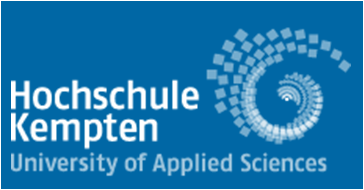Interface ElectronicsIntroductionProf. Dr. Jörg VollrathIndex |
Video 1. lecture
|
Länge: 01:06:27 |
0:0:0 Interface Electronics 0:0:51 Laboratory overview 0:1:54 Web page report 0:2:26 Lecture overview 0:4:48 Prof. Joerg Vollrath 0:4:52 Problems and solution 0:5:52 Solutions 0:6:53 Work in industry, Siemens, Infineon, Qimonda 0:9:48 Arduino ADC, DAC 0:11:1 Trade Fairs 0:11:48 Motivation digital information 0:14:10 Plan for this lecture 0:15:2 Literature, Books 0:16:58 CMOS Analog circuit design Holberg 0:17:58 Manufacturers 0:19:22 Arduino MKR Wifi 1010 0:24:19 Minimum and maximum code and voltage 0:28:58 Sample rate 0:30:46 Arduino project documentation 0:33:28 Extension boards Digilent AD2, DA2 0:35:8 Recording the timeline, time estimation 0:36:58 Take your own notes 0:37:50 Properties of digital signals 0:38:45 Analog and digital signal 0:41:3 LSB and fs sampling frequency 0:42:48 Digital to analog converter metric 0:45:13 Example, Vref, LSB accuracy, 0:49:18 Vmax 0:51:33 Offset error, gain error 0:53:33 Offset error, gain error in graph 0:56:33 |
Welcome
- Welcome to Interface Electronics
- Get to know each other.
- My background
- Your background
- Expectations
- What is Interface Electronics?
- List of participants.
- List for practical training.
Lecturer
|

|
Memory Products 64M..2G Bit DRAM
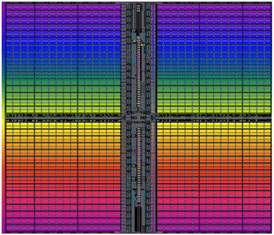
|
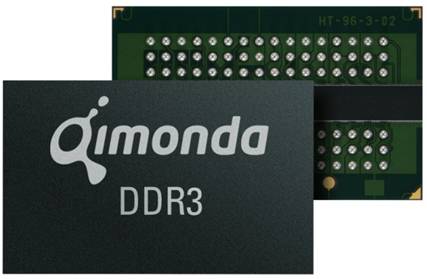
|
- Memory test and fault diagnosis for yield enhancement
- Reliability studies for product qualification
- Verification of digital and analog circuits
Questions
What about you?- What is your background?
- What are the challenges in a german master class?
- How do you prepare for the exams?
- How do you get a master thesis?
- What are the benefits and drawbacks?
- Where do you see challenges?
- How can you achieve a master degree?
Challenges
- Limited time
- German language
- Previous knowledge
- Time management
- Student responsibility
- Written reports
- Initiative
- Jobs, master thesis, scientific project
Important Events
Motivation: Data converters
- This is the digital age!
- Everything has to be converted to the digital domain
- Signal conversion is happening all the time
- What about the signal quality and the error?
- Understanding of data sheet and measurement
- Data converters are mixed signal designs
- Analog and digital circuits
- Analog and digital filters
- Time domain and frequency domain
- Challenge of high speed, high accuracy and low power circuits
Overview
|
|
References
|
CMOS: Circuit Design, Layout, and Simulation, Revised Second Edition, R. Jacob Baker, Wiley, ISBN 978-0-470-22941-5, Revised 2nd Edition, 2008. CMOS: Mixed-Signal Circuit Design, Second Edition, Baker, Wiley 2009 CMOSedu.com Data Conversion Handbook (Analog Devices) Walter Kester 64 Euro Data Conversion Handbook pdf Analog Dialogue University Program Online Teaching Material |
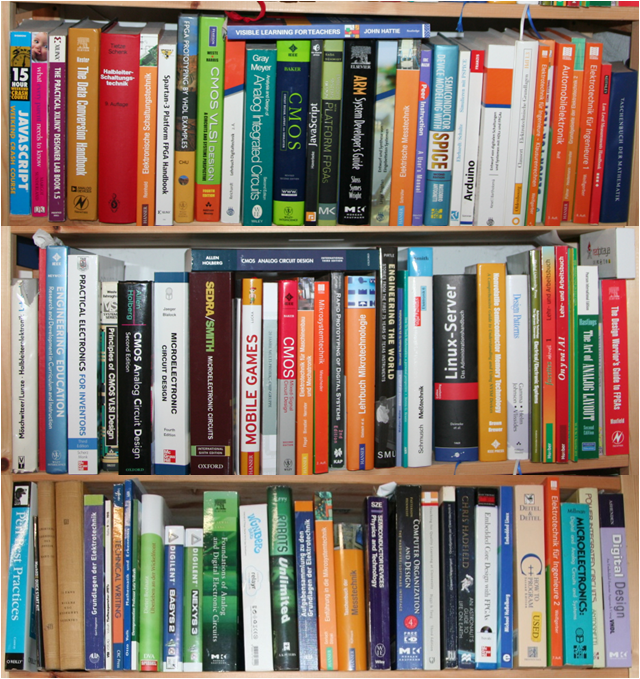
|
References
|
EE247 Analog-Digital Interface Integrated Circuits Instructor: Haideh Khorramabadi http://inst.eecs.berkeley.edu/~ee247/fa09/index.html Murmann, Stanford EE315B - VLSI Data Conversion Circuits https://www.stanford.edu/group/murmann_group/cgi-bin/mediawiki/index.php/Boris_Murmann |

|
Course Description EE247
Architectural and circuit level design and analysis of integrated analog-to-digital and digital-to-analog interfaces in modern CMOS and BiCMOS VLSI technology.
Analog-digital converters: Nyquist and over-sampled, digital-analog converters, sample/hold amplifiers, continuous-time and switched-capacitor filters.
Low power mixed signal design techniques.
Data communication systems including interface circuitry.
CAD tools for analog design for simulation and synthesis.
Architectural and circuit level design and analysis of integrated analog-to-digital and digital-to-analog interfaces in modern CMOS and BiCMOS VLSI technology.
Analog-digital converters: Nyquist and over-sampled, digital-analog converters, sample/hold amplifiers, continuous-time and switched-capacitor filters.
Low power mixed signal design techniques.
Data communication systems including interface circuitry.
CAD tools for analog design for simulation and synthesis.
References
|
CMOS Analog Circuit Design Philip Allen, Douglas Holberg http://www.aicdesign.org/ https://aicdesign.org/2016-short-course-notes-2/ 2nd Edition of the book has data converters. Some editions don't have data converters. |

|
Online References
- Wikipedia
- CMOSedu.com
- Analog Devices
Analog to digital converters - Texas Instruments, Precision Labs Videos
https://www.ti.com/data-converters/learning-center.html - Maxim now part of Analog Devices
https://www.maximintegrated.com/en/products/analog/data-converters.html - Linear Technologies now part of Analog Devices
- Burr Brown part of Texas instruments
- Infineon
Practical Training 2023
- Guided laboratory: Report, LTSPICE and data converters
- Laboratory: Simulating an ADC DAC test setup
- Laboratory: Setting up the Arduino MKR WIFI 1010
- Building and measuring a R2R DAC
- Measuring a PMOD ADC and DAC
Final report -> Grading
Motivation
Design of a system needs data converter components for signal generation and verification measurements.
What effort (time, money) is needed to realize a measurement of a signal or a generation of a signal with a certain accuracy/resolution and speed?
Integrated Systems: Oscilloscope, arbitrary waveform generator, Electronic Explorer
DAC, ADC systems: Evaluation board with ADC, DAC and FPGA or microprocessor
DAC, ADC circuit: How to design a low cost, high performance ADC or DAC?
Analog Digital Interface Circuits
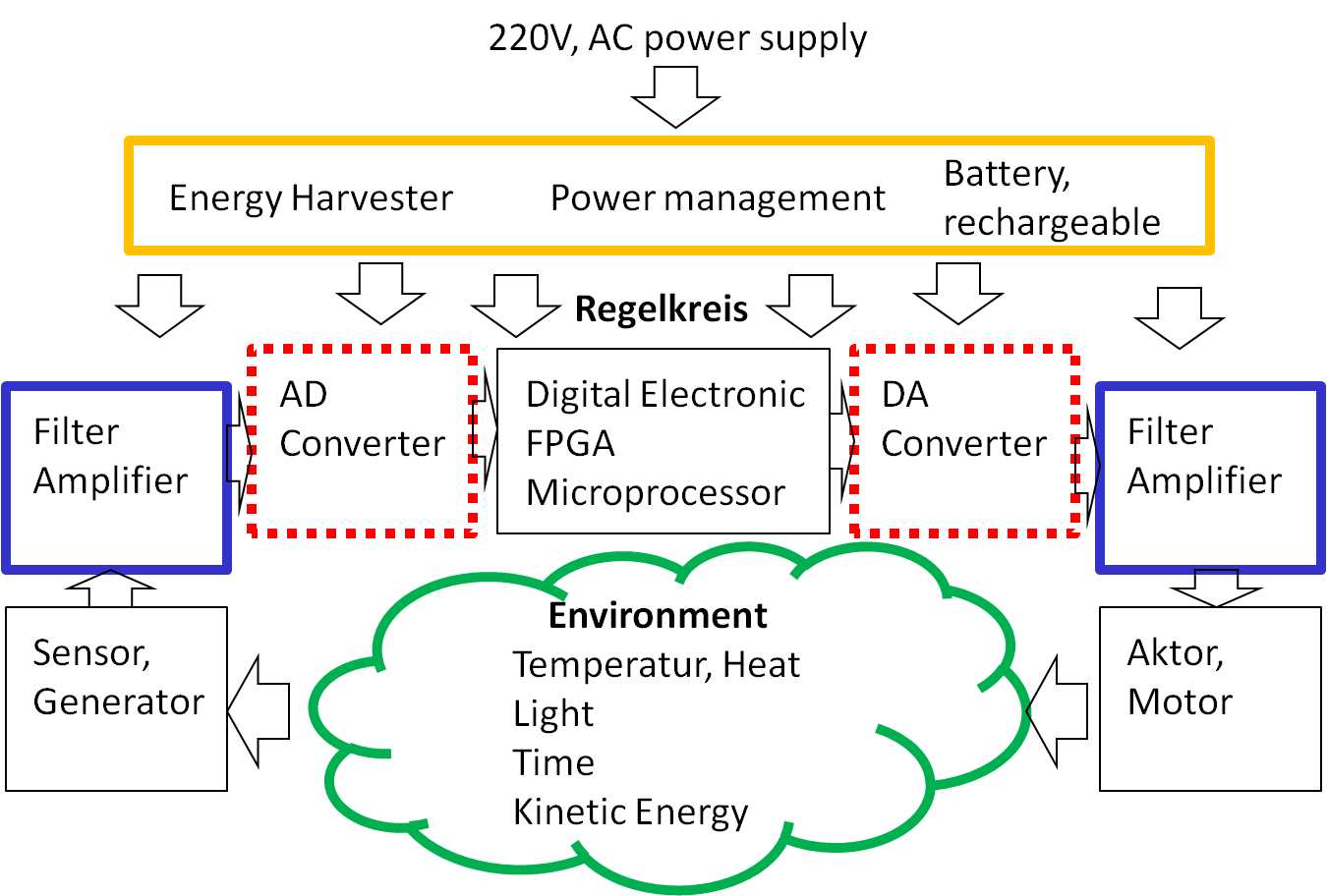
- Naturally occuring signals are analog
- Why are data converters and digital signal processing used?
Example Arduino MKR WIFI 1010
Analog Calibration
|
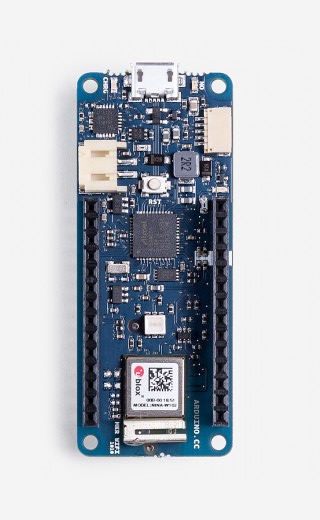
|
Arduino ADC, DAC project
Minimum value of ADC: 0
Maximum value of ADC 1021
Minimum voltage: 30 mV
Maximum voltage: 3.31 V
Sampling rate: 289.28 Hz
Minimum value of ADC: 0
Maximum value of ADC 1021
Minimum voltage: 30 mV
Maximum voltage: 3.31 V
Sampling rate: 289.28 Hz
Analog versus digital electronic
| Digital Circuits | Analog Circuits |
|
|
Analog circuits are getting more convenient for user and more complex for designer.
Digital offset and gain adjustment and digital filters for compensation.
Properties of digital signals
Properties:
|

|
The green analog curve is discretized in time and level resulting in the red points.
The smallest difference in level is called delta Δ or LSB (least significant bit).
The smallest difference in time is called sampling time (ts).
The smallest difference in level is called delta Δ or LSB (least significant bit).
The smallest difference in time is called sampling time (ts).
Data converter application
A graph with x axis resolution and y axis frequency shows applications.
Data converter application: software defined radio SDR
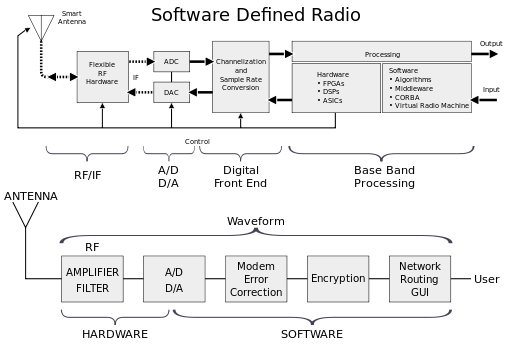
A tuneable filter provides a limited bandwidth to an ADC.
The radio protocol (WiFi, Bluetooth, FM, AM, digital-TV,LTE)
is realized in the digital signal processing block.
Data converter application: Mobile phone
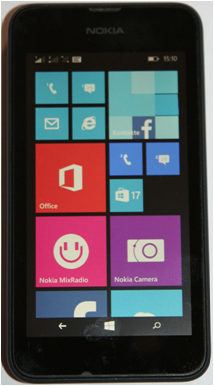
|
Filters Number of data converters: HSDP, LTE, UMTS, WLAN, bluetooth motion, pressure, proximity sensor speaker, microphone display control |
Digital to analog converter metric
|
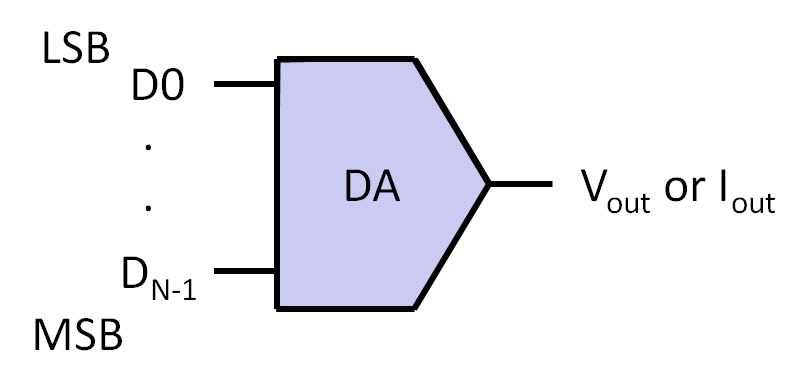 \[ \Delta = \frac{V_{ref}}{2^N} \]
\[ N = log_2 \frac{V_{ref}}{\Delta} = ld \frac{V_{ref}}{\Delta} \]
\[ V_{max} = V_{ref}- \Delta \]
\[ \Delta = \frac{V_{ref}}{2^N} \]
\[ N = log_2 \frac{V_{ref}}{\Delta} = ld \frac{V_{ref}}{\Delta} \]
\[ V_{max} = V_{ref}- \Delta \]
|
\[ V_O = V_{ref} \sum_{i=0}^{N-1} \frac{D_{i}}{2^{N-i}} \] \[ V_O = \Delta \sum_{i=0}^{N-1} D_{i} \cdot 2^{i} \]
Attention: Vref, Vmax, VFS
Analog devices Data Converter book sometimes states VFS = Vref
Baker (Equation 28.8) and Texas Instruments Understanding Data converters define VFSR = Vmax
In some circuit architectures Vref = Vmax
Watch out and act accordingly.
Digital to analog converter transfer characteristic
Table: ideal 2 bit DAC
|
\( LSB = \frac{V(11)-V(00)}{2^{N}-1} \)
Offset error: Voffset = V(00) = 0.2 V
Gain error: Vgain = \( \frac{V(11)_{real} }{ V(11)_{ideal} } = 1.1 \)
The points are the generated measurable values. The straight line only interpolates these values to show a
linear relationship of the values.



